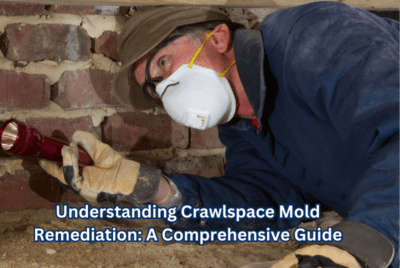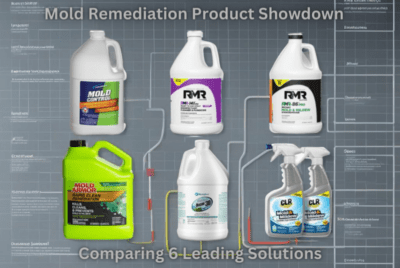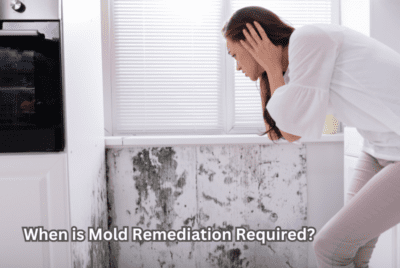Air Purifier for Mold: 3 Key Factors to Consider
Have you ever encountered mold in your home? I certainly have, and it was a frustrating and alarming experience. Mold not only poses risks to our health but can also damage our property. That’s why I want to share my knowledge and recommendations for selecting the right air purifier for mold. In this article, I will explain the dangers of mold, how it spreads, and why air purification is crucial. Additionally, I’ll provide useful tips for preventing mold growth and maintaining a clean indoor environment.
Understanding Mold
Understanding Mold: Explaining the Basics
Before we delve into air purifiers, it’s essential to understand what mold is. Mold is a type of fungus that thrives in moist environments, often appearing as dark spots or patches on surfaces. It reproduces by releasing tiny spores into the air, which can trigger various health issues when inhaled. Common indoor molds include Aspergillus, Penicillium, and Stachybotrys chartarum (black mold).
The Dangers of Mold
The Dangers of Mold: Risks to Our Health and Property
Exposure to mold can have severe consequences for our health. Mold spores can cause allergic reactions, respiratory problems, and even exacerbate existing conditions like asthma. Prolonged exposure to mold may lead to more serious health issues. Furthermore, mold can damage our homes and belongings, leading to costly repairs and a decrease in property value.
How Mold Spreads
How Mold Spreads: Understanding the Lifecycle of Mold
To effectively combat mold, it’s crucial to comprehend how it spreads. Mold thrives in environments with moisture and organic materials to feed on, such as wood, paper, or fabric. Spores can travel through the air, attach themselves to surfaces, and begin growing under favorable conditions. Mold colonies release new spores, perpetuating the cycle and making it challenging to eliminate.
The Need for Air Purification
The Need for Air Purification: Creating a Clean and Healthy Indoor Environment
To tackle mold growth, investing in a reliable air purifier is essential. Air purifiers designed specifically for mold can help remove mold spores from the air, reducing the risk of inhalation and further contamination. They work by drawing in air, filtering out impurities, and releasing cleaner, purified air back into the room. With the right air purifier, you can improve indoor air quality and safeguard your health.
Choosing the Right Air Purifier
Choosing the Right Air Purifier: Factors to Consider
When selecting an air purifier for mold, several factors should be taken into account:
Key Features to Look for
Key Features to Look for: Ensuring Optimal Mold Filtration
To effectively combat mold, there are specific features you should prioritize when choosing an air purifier:
1. High-Efficiency Particulate Air (HEPA) Filters: HEPA filters are excellent at capturing mold spores, trapping them within the filter’s fibers and preventing their release back into the air.
2. Activated Carbon Filters: Activated carbon filters help eliminate odors associated with mold, ensuring your indoor environment smells fresh and clean.
3. UV-C Light Technology: Air purifiers with UV-C light technology can neutralize mold spores by disrupting their DNA, rendering them incapable of reproduction.
Types of Air Purifiers for Mold
Types of Air Purifiers for Mold: Exploring Different Options
There are various types of air purifiers available, each with its own advantages:

1. HEPA Air Purifiers: HEPA air purifiers excel at capturing small particles, including mold spores. They are a popular choice due to their high filtration efficiency.
2. Activated Carbon Filters: Air purifiers equipped with activated carbon filters are effective at removing mold-related odors, ensuring your space smells fresh and clean.
3. UV-C Light Technology: Air purifiers incorporating UV-C light technology can neutralize mold spores, preventing them from causing further contamination.
Additional Considerations
Additional Considerations: Noise Levels, Room Size, and Energy Efficiency
Apart from filtration technology, there are other factors to consider:
1. Noise Levels: If you plan to use the air purifier in your bedroom or office, opt for models that operate quietly to avoid disruptions.
2. Room Size: Consider the square footage of the room where you intend to use the air purifier. Ensure the model you choose is suitable for the room’s dimensions for optimal air purification.
3. Energy Efficiency: Look for air purifiers with an ENERGY STAR certification, as they consume less energy, reducing your environmental footprint and saving on utility bills.
Maintenance and Cleaning
Maintenance and Cleaning: Ensuring Longevity and Efficiency
To maintain the effectiveness of your air purifier and prevent mold growth within the unit, regular maintenance and cleaning are crucial:

1. Filter Replacement: Follow the manufacturer’s guidelines on when to replace filters, as they can become clogged and less efficient over time.
2. Cleaning the Unit: Regularly clean the exterior surfaces and internal components of the air purifier to prevent the buildup of dust and mold spores.
Tips for Preventing Mold
Tips for Preventing Mold: Proactive Measures for a Mold-Free Environment
In addition to using an air purifier, here are some preventive measures to minimize the risk of mold growth:
1. Monitor Humidity Levels: Keep indoor humidity below 50% to create an environment less conducive to mold growth. Use dehumidifiers if necessary.
2. Address Moisture Issues: Fix any leaks or sources of moisture promptly. Proper ventilation in areas like bathrooms and kitchens can help prevent excessive moisture buildup.
3. Regular Cleaning: Clean and dry areas prone to moisture regularly, such as bathrooms and basements. Promptly dry any wet surfaces or materials.
Conclusion
Conclusion: Breathe Easier with an Air Purifier for Mold
Investing in an air purifier specifically designed to combat mold can significantly improve your indoor air quality and overall well-being. By capturing and neutralizing mold spores, these devices create a clean and healthy environment for you and your loved ones. Remember to consider key features, such as HEPA filters, activated carbon filters, and UV-C light technology when selecting an air purifier. Additionally, practice preventive measures to minimize the risk of mold growth and maintain a mold-free environment.
FAQs (Frequently Asked Questions)
1. Can an air purifier completely eliminate mold in my home?
While air purifiers are effective at capturing and neutralizing mold spores in the air, they cannot eliminate mold growth entirely. It’s crucial to address the source of the mold, fix any moisture issues, and clean affected areas thoroughly.
2. How often should I replace the filters in my air purifier?
The frequency of filter replacement depends on the specific air purifier model and usage. Refer to the manufacturer’s guidelines for recommendations on when to replace filters. Generally, HEPA filters are typically replaced every 6 to 12 months.
3. Can an air purifier help with mold-related odors?
Yes, air purifiers equipped with activated carbon filters can help eliminate mold-related odors. The activated carbon absorbs and traps the odor molecules, leaving your indoor environment smelling fresh and clean.
4. Are UV-C light air purifiers safe to use?
UV-C light air purifiers are safe to use when used properly. The UV-C light is contained within the air purifier, ensuring minimal exposure to humans. It’s important to follow the manufacturer’s instructions and guidelines for safe operation.
5. Can an air purifier prevent mold from growing on surfaces?
While air purifiers can help reduce the number of mold spores in the air, they cannot prevent mold from growing on surfaces. To prevent mold growth, it’s essential to address moisture issues and maintain a clean and dry environment.




